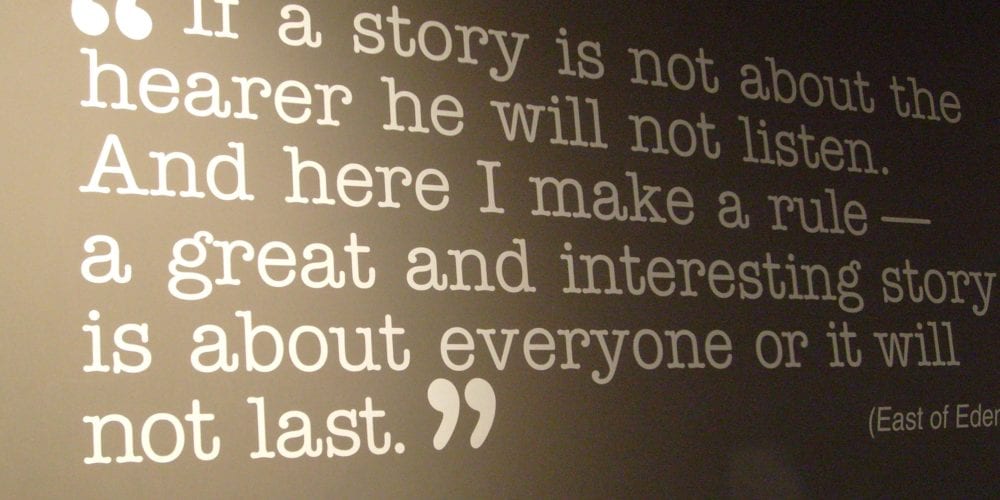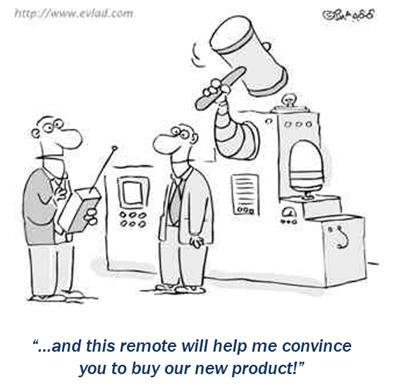How to Incorporate Customer Storytelling in Your Business

The way business marketing has been executed has changed over the past few years, particularly with the rise of social media. What used to be a one way conversation became a two-way conversation with the Internet, when customers realized the power of developing their own websites and providing their own reviews. When social media became even more popular, the conversation became a conference since many could get together in one place and share all of their opinions at once.
While the engagement has become more fluid and accelerated, the way businesses tell stories has changed very little. Even now as I write, many businesses still see product storytelling as the way of marketing to prospective customers. While there is absolutely nothing wrong with this, product storytelling still misses one key component: the customer. In this post, we’ll take a look at where marketing is heading in the future with customers and how small businesses can incorporate customer storytelling into their marketing activities.
Marketing is a Customer-Centric Future
End users have cemented themselves as a key component in marketing, sometimes even creating content where there wasn’t any t o be created in the first place. As identity becomes a core feature in social marketing and content creation (photos, videos, status updates, and more), there becomes greater value in content such as “selfies” or organically placed products. For example, a selfie of a young twenty-something with a snowboard at a ski resort represents both the endorsement of a product, an endorsement of an activity, as well as an identifier of someone saying “I am a snowboarder”.
o be created in the first place. As identity becomes a core feature in social marketing and content creation (photos, videos, status updates, and more), there becomes greater value in content such as “selfies” or organically placed products. For example, a selfie of a young twenty-something with a snowboard at a ski resort represents both the endorsement of a product, an endorsement of an activity, as well as an identifier of someone saying “I am a snowboarder”.
While its easy to dismiss that this is just a photo, the movement signals a future that we here at Curatti dub The Content of People, or the Internet of People. Note that this sounds a little bit like something similar, The Internet of Things, better known as IoT. That’s because in some sense, people and things are converging as we head towards an even more digital society — as consumers associate themselves with things and items, they become that item, as opposed to that item molding who they are. What you’re now seeing is a world where products no longer define people, but a world where the end user defines the product. Identity ultimately will (and has begun to) shift.
How to Execute in the Content of People (CoP)
Executing in the Content of People is a challenge, but not entirely impossible. As I look to the future of marketing and storytelling, here’s how I see the CoP impacting how marketing is done.
- An emphasis on customer service: Because people are at the center of marketing and not the product, customer
 experience and service are at the center of small and medium business. What has long been known more in big business and corporations will eventually make its way down to small and mid-size businesses. Because customers define the product as well, customer service will also serve as a central standing point to creating better products and increasing demand.What You Can Do: Start identifying customer service breakthroughs that you can take advantage of to improve product. One of the best ways to do this is to ask questions early and often in the customer process.
experience and service are at the center of small and medium business. What has long been known more in big business and corporations will eventually make its way down to small and mid-size businesses. Because customers define the product as well, customer service will also serve as a central standing point to creating better products and increasing demand.What You Can Do: Start identifying customer service breakthroughs that you can take advantage of to improve product. One of the best ways to do this is to ask questions early and often in the customer process. - Products will transform radically: With identity at the forefront of products, how products are made and sold will transform more than ever. The experts in the room will no longer be business but also be the end user, who drives the direction of the product as much as the product marketing and management team.What You Can Do: Agility is the adjective of the day when it comes to product. Engineers and marketers alike must develop a mindset that allows for rapid change based on customer feedback. While its important to stay true to the company, a more powerful customer sometimes means pivoting as well.
- Tell Customer Stories and Encourage Storytelling: People love to be featured on social media because it opens up a shareable moment. Shareable moments mean comments and congratulations, and those tend to rank very high on Facebook’s EdgeRank algorithm, driving comments, likes, and shares. Telling customer stories begins with asking, whether it’s for permission to speak to them or giving them permission to speak on their own using what’s available. This can take a lot of time but done right, can transform your business in ways you never imagined.What You Can Do: At the heart of customer storytelling is product marketing, which means if you are creative, it’s Christmas morning. Media opportunities have exploded in the past 10 years, and marketers have access to everything from podcasts to videos and platforms from YouTube to Facebook. With no shortage of opportunity or platforms to share the opportunity, marketers and business owners alike have absolutely no excuse to be dry on ideas.
The Curatti Takeaway
With identity being at the center of marketing and the Content of People (CoP) soon to take center stage, customer storytelling is seeing its golden age. With numerous opportunities available and customers clamoring for involvement in the narrative of business, business owners face challenges but also the ability to take what they do to the next level. Get ready!
Image attribution: http://keepingithuman.com/storytelling-improves-customer-experience/

